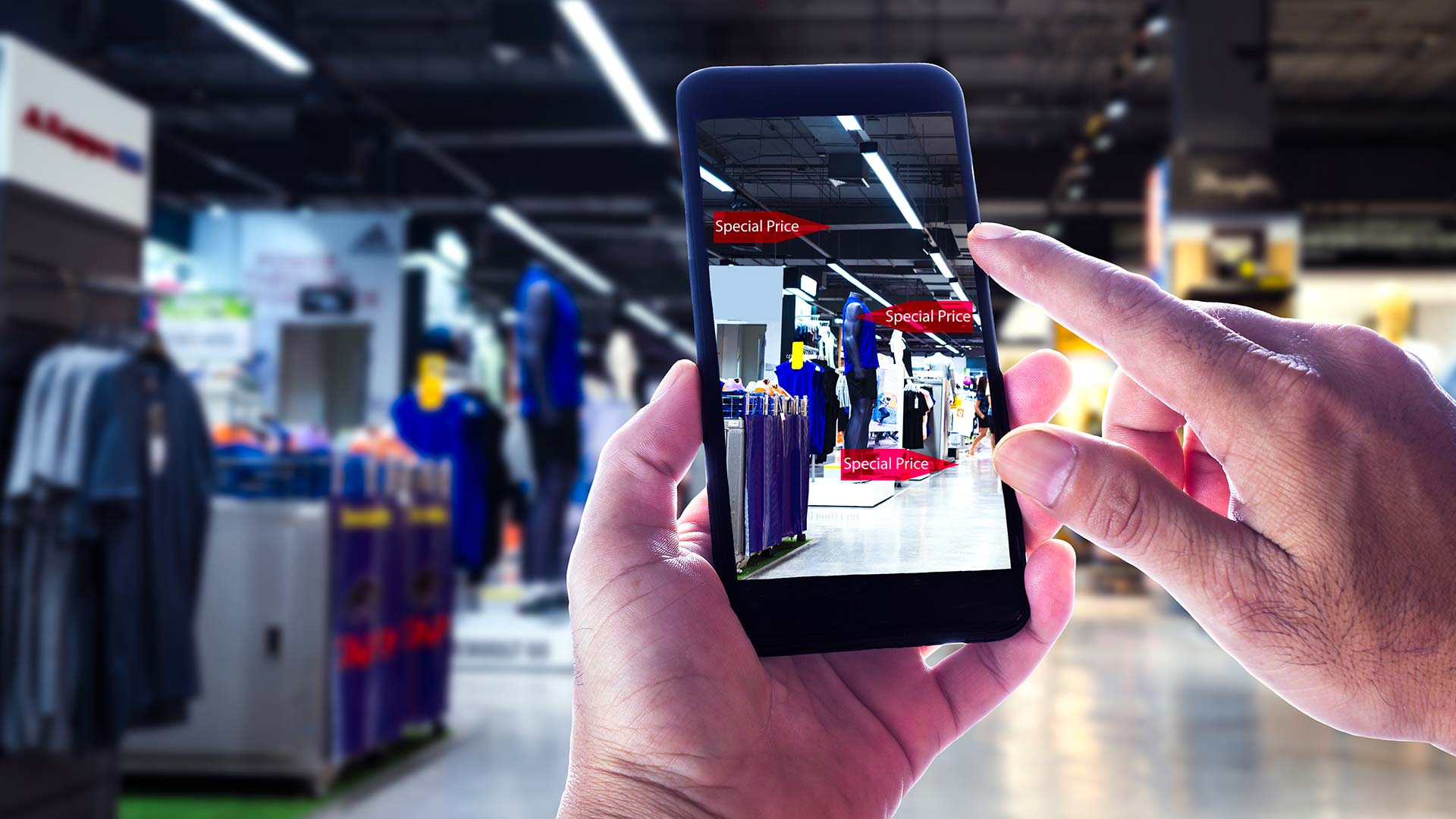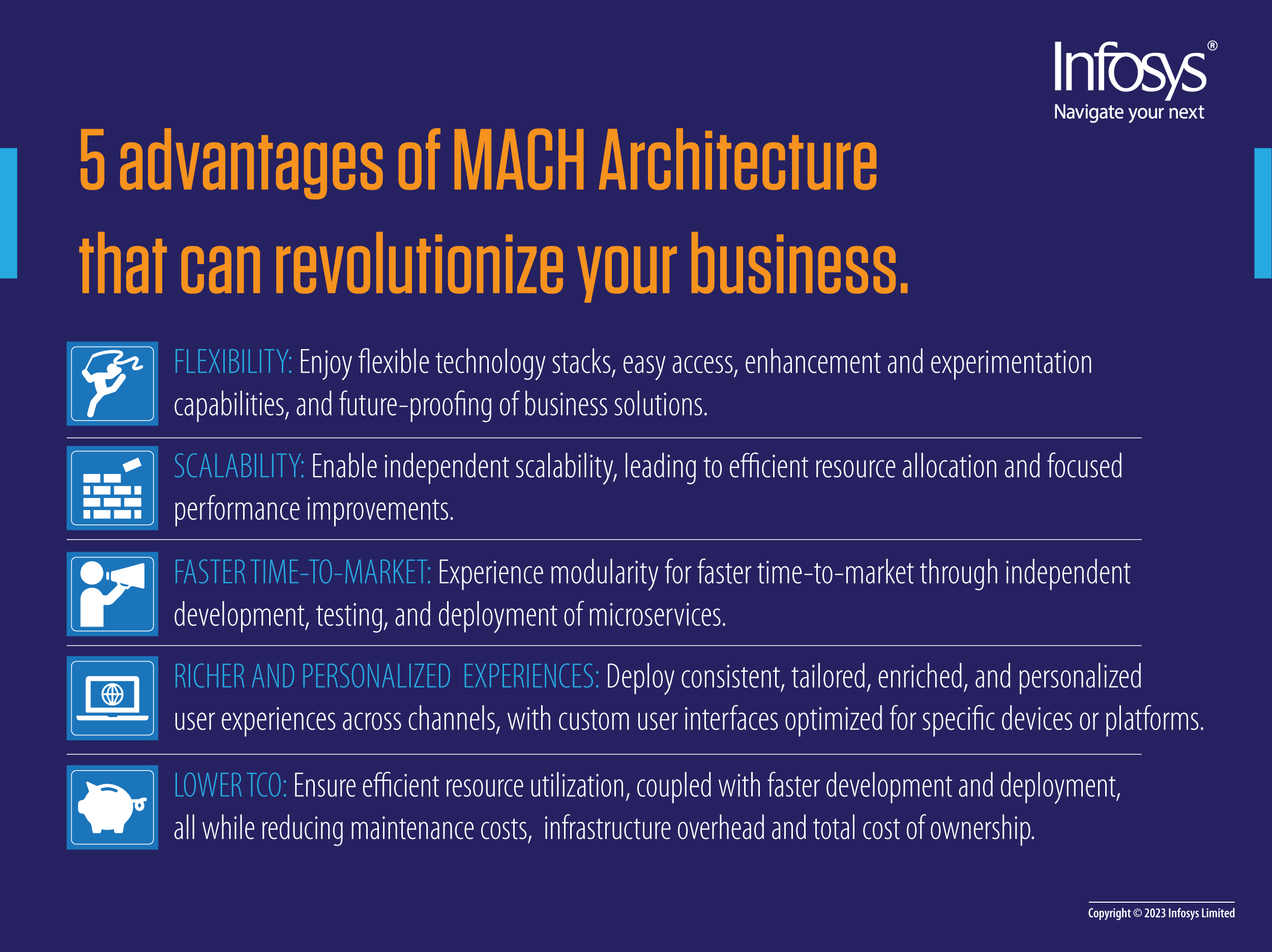In a business environment rapidly turning to digital technology to survive and thrive, the underlying technology infrastructure that powers the enterprise must be tuned to respond accordingly. Scalability, speed, agility, resilience and flexibility are terms that we hear a lot today. At the same time, the emphasis on providing personalized customer experiences while boosting productivity of resources and revenues remains high. Enterprises are thus primed for progress but held back by monolithic systems.
Monolithic systems tend to be less flexible, agile, reliable and resilient – clearly, unsuited for the dynamic changes that are so characteristic of these times. However, most companies still run their businesses on monolith legacy systems. Companies realize that is not the most conducive background to support digital transformation, enhance customer experiences, drive business growth, and seek alternatives.
That’s where MACH architecture, Microservices based, API-first, Cloud-native SaaS and Headless can play a major role. MACH architecture enables organizations to build modern, customer experience focused, cloud-native, and scalable systems that can support digital transformation initiatives at a fast clip. The four pillars that comprise MACH architecture make it so powerful –
API Centricity – APIs are designed and developed before any user interface or other system components are built.
Cloud native – SaaS solutions make scaling and automatically updating the components easier. In addition, it is possible to establish multi-tenant SaaS that is provisioned on demand, self-serviced and consumed as a service.
Microservice based architecture – individual pieces of business functionality that are independently developed, deployed and managed.
Headless – the front end is completely decoupled from the backend and can be changed independently without disturbing the backend.
Thanks to its composable nature, MACH’s distinct advantage is that it offers flexibility to business users to replace solution components in their system landscape in a plug-and-play manner, enabling them to quickly cater to ever evolving business needs. Such a fast response is almost unimaginable with a monolith. Moreover, monolithic systems imply vendor lock-ins, further restricting flexibility.
Consider a typical commerce platform with multiple capabilities, such as a digital experience platform, order management system, payment, vouchers and promotions. Monolithic systems are typically single vendor platforms. All capabilities are built as an extension of this platform’s base capabilities, limiting an enterprise’s choice to what only the vendor offers. However, with a MACH based approach, enterprises can build next generation platforms with components from multiple vendors, each of which can be independently replaced if they are not able to keep pace with evolving business demands. So, suddenly, the system becomes much more flexible as each component is decoupled. Each component can be selected based on business demand and its capabilities. For instance, a commerce platform can integrate with an external search engine because it’s API based and switch to another easily because it offers superior outcomes.
Another huge appeal of MACH architecture is that all components are SaaS based or cloud native. As a result, MACH architecture will reduce the infrastructure footprint that the enterprise needs to manage. They now have the bandwidth to build business capabilities instead of focusing on hosting needs.
MACH architecture offers several advantages over monolithic architecture. MACH is a more flexible and scalable architecture that enables faster and more frequent deployments, reduces dependency on a single technology stack, allows for greater agility in responding to changing business needs, and promotes better overall system resilience. We discuss the many advantages that MACH architecture offers in the next blog in this three-part series.
It appears that enterprises must quickly shift to MACH platforms. MACH Alliance research showed that four-fifths of their respondents strongly intended to increase MACH elements in their architecture in the future as they believe that will help them get ahead of the competition[1]. In addition, almost half the respondents desired completely composable platforms, while over 50% wanted completely cloud driven platforms.
According to the Infosys Digital Commerce Radar 2023 study, companies seem to be adopting MACH platforms.

Figure 1 Implementation status of different platform design architectures
While all three types of architecture exist today, the trend is to move towards flexible and technologically advanced options.
However, implementing a MACH architecture can consume significant time, resources and expertise based on the business needs. Moreover, the complexity will increase with a distributed systems layout. Therefore, the decision to shift from a monolithic architecture to MACH should involve a careful evaluation of the organization’s goals, needs, and resources and a thorough assessment of the technical feasibility and costs of the transition. If the evaluation gives the go-ahead for a shift to MACH, then it’s worth the investment.
At Infosys, we are keenly aware of the intricacies of making this decision. That’s why the third blog in this three-part series will focus on the key considerations for companies before taking the MACH road.
[1] Global 2022 Research Shows MACH Adoption Is High On The Agenda for Tech Leaders (machalliance.org)











